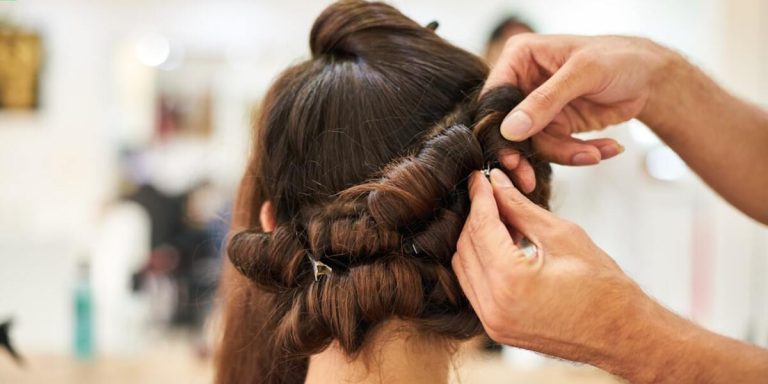Non-Scarring Hair Loss Treatment: Innovative Solutions to Revive your Tresses
Hair loss can often be a distressing phenomenon. Fortunately, with the advent of non-scarring hair loss treatments, it’s possible to effectively combat this issue and regain your luscious locks. These innovative solutions have been designed to specifically target areas of thinning or shedding without causing any further damage or scar tissue development on the scalp.
Non scarring hair loss treatment offers groundbreaking technology in its methodology that not only promotes growth but also nourishes and strengthens existing strands. This write-up aims to dive deep into elucidating how these procedures work, their potential benefits, precautions one should take while considering them and bust some common myths associated around such options for treating hair fall.
Did you know?
Despite common perception, Alopecia Areata (a type of non-scarring hair loss) is not caused by stress but often has an unpredictable course with multiple genes involved. The treatment involves innovative therapies that can help stimulate hair growth.
Understanding Non-Scarring Hair Loss: Causes and Identification
Non-Scarring hair loss, also referred to as non-cicatricial alopecia, is a category of hair loss disorders distinguished by the absence of fibrous tissue formation (scar) and potential for full re-growth. This type encompasses many common types seen regularly like male pattern baldness or female pattern baldness.
Non-scarring hair loss typically stems from genetic or hormonal changes. Conditions like telogen effluvium, which can arise from stress, disrupt the body’s natural growth cycle and cause excessive shedding without scarring. Nutritional deficiencies also contribute to non-scarring hair loss, with low protein and iron intake leading to scalp thinning.
On an interesting note regarding identification – medical professionals traditionally rely upon specialized tests coupled with clinical observations considering no visible scars present on the affected areas. Trichologists use tools like dermoscopy that allow magnified visualization helping them reveal miniaturized follicles that mark early stages of certain forms including androgenetic alopecia amongst others.
Remember though every case varies hence it becomes vital connecting with healthcare practitioners who specialize treating such issues ensuring you get accurate diagnosis followed by effective treatment plans aligning perfectly with individual needs. In our next section we’ll be setting sights onto exploring treatments associated especially tailored for cases dealing Non-Scarring Hair Loss situations promising hope restoring those lovely locks back!
Recognizing the Signs of Non-Scarring Alopecia
To recognize the signs of non-scarring alopecia effectively, awareness is key. Non-Scarring Alopecia refers to types of hair loss that don’t lead to scarring on the scalp, including Telogen Effluvium and Androgenetic Alopecia. Understanding these symptoms can help identify an appropriate course for non scarring hair loss treatment promptly.
Firstly, sudden excessive shedding is a primary indicator you may be dealing with this type of ailment. Ordinary hair fall typically amounts up to 100 strands per day but experiencing more than this regularly could signify a deeper issue.
Secondly, observe your parting line if it’s getting wider over time or there’s noticeable thinning toward front areas–a stereotypical sign associated frequently with Androgenetic Alopecia.
Remember also to make note of any change in the overall fullness of your mane because significant reduction might hint at Telogen Effluvium wherein large volumes enter their resting phase all at once due largely stress-related triggers among others factors depending on individual circumstances.
Differentiating Between Scarring and Non-Scarring Hair Loss Types
Differentiating between scarring and non-scarring hair loss types is an integral part of understanding the best approach to treatment. When it comes to losing your locks, not all forms are created equal.
Firstly, let’s understand what these terms mean in simple words. Scarring hair loss (also known as cicatricial alopecia) involves a condition where irreversible damage occurs to the hair follicles. This results in permanent bald patches on your scalp – something that we’d naturally want to avoid if possible.
The process may seem daunting but here’s how you do it: A key indicator for differentiating could be based on visual examination; while both types lead to visible thinning or balding areas, only scaring manifests inflamed skin or redness around affected parts.
Without professional observation though oftentimes distinguishing becomes challenging due its subtleties thus consulting dermatologist would likely serve beneficial ensuring precise diagnosis determining suitable path recovery.
In context 2023 burgeoning advancements medical technologies AI-based software image recognition tools being increasingly used help identify different patterns conditions more accurately quickening diagnostic phase saving precious time course commencing needed steps towards regrowth restitution cherished tresses!
Advancements in Non-Scarring Hair Loss Treatment Options
The realm of hair loss treatments has been witnessing a wave of innovation and progress, particularly within the scope of non-scarring options. Leading trichologists agree that it’s an exciting time in this focused area, as more advanced care is now available to combat non-scarring alopecia effectively.
Technological advancements have transformed traditional approaches to treatment, both preventive and corrective. Techniques such as laser therapy or platelet-rich plasma (PRP) therapies are becoming increasingly popular due to their highly effective nature and fewer side effects compared with historic remedies. These novel solutions offer hope for patients seeking help for various types of alopecias including Alopecia Areata –evidence-backed successes show significant regrowth potential.
Moreover, breakthroughs in medical science present prospective innovations on the horizon worth keeping an eye out. The emerging field nanotechnology holds promise in combating follicular challenges without scaring away your natural beauty aspect – literally! With these strides forward paving new paths towards healthier scalps around the world–the future appears brighter than ever before!
The Role of Medication in Managing Alopecia Without Scars
Notably, two types of medication have taken center stage as primary treatment options for non scarring hair loss – Minoxidil and Finasteride.
Minoxidil comes largely recommended due to its compelling success rate over the years. It is topically applied directly onto your scalp where it works by enhancing blood flow into the area hence encouraging new growth while also bolstering existing strands.
Finasteride operates differently but equally effective – it hinders production of dihydrotestosterone (DHT) responsible for shrinking hair follicles leading to their eventual inefficiency at facilitating normal healthy growth cycles.
However, effectiveness varies across individuals stemming from factors like genetic predisposition or extent of hair loss when initiating therapy with these medications. Some patients may witness impressive transformations within six months whilst others might require around twelve months before notable improvements are registered.
Considerations such as side effects associated with each drug should also be highlighted when factoring medicines into managing alopecia without scars strategy–ranging from rashes on skin areas exposed to minoxidil solutions, lightheadedness among other mild reactions; finasteride has been linked occasionally causing sexual dysfunctions in male subjects during studies conducted so far.
Breakthroughs in Laser Therapy for Stimulating Hair Regrowth
The science behind laser therapy for hair regrowth lies in its ability to stimulate follicular cells. The light energy absorbed by these cells can increase circulation and cellular metabolism within the scalp region, promoting hair growth.
One breakthrough includes Low-Level Laser Therapy (LLLT). LLLT utilizes low-power lasers or light-emitting diodes that radiate infrared light onto the scalp. This stimulates blood flow and nutrient supply to follicles supporting robust hair regeneration.
Another significant development involves High Power Laser Therapy (HPLT), offering a more intense approach compared with LLLT targeting deeper tissue layers stimulating stronger and healthier re-growth.
Lifestyle Changes Supporting Non-Scarring Alopecia Management
The world of hair loss treatment has come a long way, and fortunately for those suffering from non-scarring alopecia, it’s not all about medications or surgical procedures. Yes indeed! Lifestyle modifications can also play an instrumental role in managing this type of hair loss efficiently.
Simple yet substantial changes, such as maintaining a balanced diet, can work wonders in cases of non-scarring alopecia. This condition is marked by temporary hair shedding without permanent damage to the follicles. Nutrition is crucial for promoting healthy hair growth and effectively combating this type of baldness.
To strengthen your strands from within and protect them against breakage or premature fallout caused by daily environmental aggressors, ensure your diet includes:
- Proteins
- Iron
- Zinc
- Vitamins, particularly Vitamin D & E
Another impactful lifestyle modification would be incorporating regular exercise into your routine as it enhances blood flow ensuring better nutrient supply towards scalp areas thus contributing positively towards strengthened roots and vigorous new growth; this dual benefit makes fitness regimen one effective strategy for tackling non scarring alopecia head-on.
Diet and Nutrition’s Impact on Healthy Hair Growth
In managing non-scarring alopecia, a realm of hair loss treatment that focuses on the absence of scar tissue formation in affected areas, lifestyle changes can play a significant role. A key component is your dietary intake and nutrition’s impact on healthy hair growth.
Maintaining a well-balanced diet rich in all necessary nutrients is crucial for overall health as well as specific bodily functions like keratin production – an essential protein responsible for our lustrous locks.
Stress Reduction Techniques to Prevent Exacerbating Hair Loss
Stress can play a significant role in exacerbating non-scarring alopecia, thereby making it essential to incorporate stress reduction techniques as part of your overall hair loss treatment regime.
One effective method is regular exercise. This not only helps reduce stress levels but also boosts overall health which could positively impact hair growth. Activities such as yoga and Pilates have been known for their calming effect on the mind while strengthening physical endurance.
Incorporating mindfulness activities into daily routines plays an instrumental role in lessening anxiety associated with persistent thoughts about hair loss, hence preventing any further deterioration caused by worry or fear. Practices like meditation offer powerful tools for managing emotional distress and fostering mental wellbeing—a key contributor towards healthier locks!
Consider adopting healthy sleeping patterns too! Sufficient rest rejuvenates our bodies leading to hormone regulation which indirectly promotes scalp healthiness conducive for advanced non-scarring alopecia management.
Furthermore, developing hobbies that induce pleasure sustains your mental calmness reducing chances of undue tension accumulation potentially triggering more hairs falling out. Whether it’s painting, gardening or playing musical instruments—the goal is maintaining serenity promoting increased resilience thus reducing susceptibility towards excessive shedding due to frictional causes arising from high-stress situations.
Lastly we owe owing much attention to nourishment—especially dietary choices fueling body functions including optimal follicle performance leading up-to enhanced regrowth rates amidst ongoing treatments targeting non scaring forms of baldness.
Conclusion
In the end, exploring non-scarring hair loss treatment options is all about understanding your unique needs and concerns. The aforementioned innovative solutions are just a few that science has generously offered up to help you reclaim not only your crowning glory but also the confidence that comes with it.
Don’t let hair loss define who you are! Knowledge is power – utilize this to make an informed decision for yourself or someone dear battling against their weakening strands. Take heart, as every setback leaves behind a path towards even greater growth ahead — in life AND on your head!
Don’t hesitate to explore our website further for more enlightening details on various Hair Loss Treatments available today.







